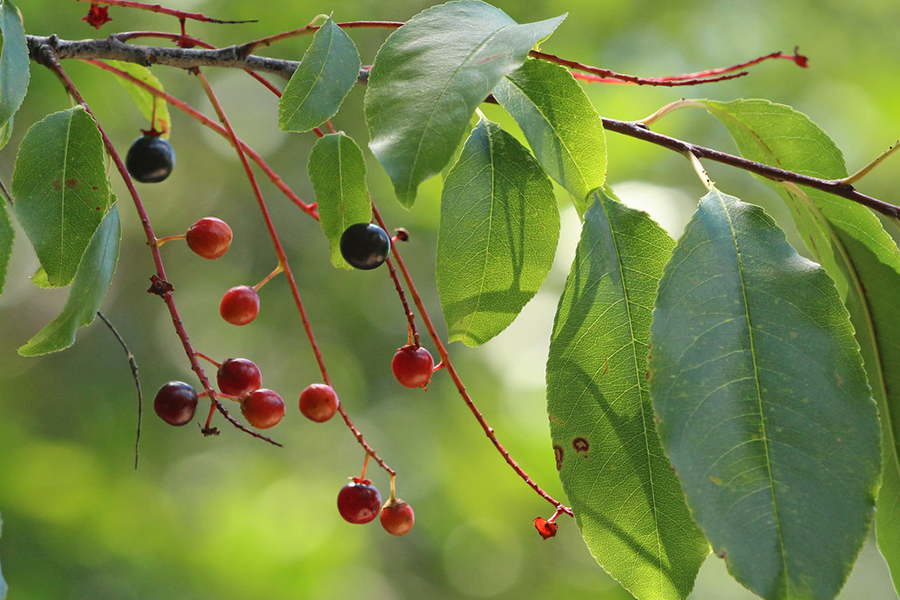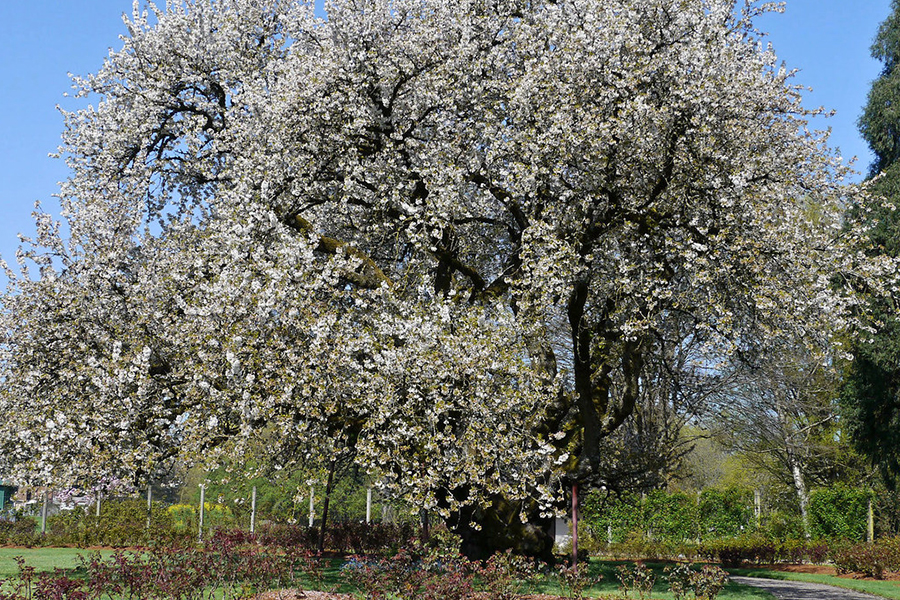Prunus serotina
Black cherry is a deciduous tree widely distributed in the United States. Though not closely related to other cherry species known for producing fruit, black cherry produces edible fruits in late summer.
Location
If you take a walk from the Hidden Spring Trail and cut across down to Larch Lane, you might be able to spot some. Or, take a walk along Magnolia Trail and see if you can find any in the distance.


History at Hadwen
Black cherry is first documented in the arboretum in 1882 as one of the original species planted by Hadwen. It was documented again in a tree survey from 1971. Interestingly, it is not documented in a survey conducted seven years later in 1978. It is unclear whether the black cherry trees actually were absent by this time or simply omitted from the report. Regardless, they can now be found in multiple places in the arboretum.
Keep Learning
Detailed Species Information
Black cherry, sometimes known as rum cherry or mountain black cherry, is a deciduous tree in the family Rosaceae. This species can be found widely throughout the midwestern, southern, and eastern United States as well as parts of Mexico. Typically fast-growing, the black cherry reaches 50–75 feet (15–22 meters) in height and up to 3 feet (1 meter) in trunk diameter. The bark of young black cherry is slightly shiny, red-brown, and features small horizontal lenticels typical of many cherry species. Mature black cherry trees have extremely broken, dark bark. The long, ovate leaves are finely serrated, shiny, and a rich green color as well as being alternately arranged on the stem.
In fall, the leaves of the black cherry change into reds, oranges, and yellows. The five-petal flowers of the black cherry are small, white and grow in clusters. Small, dark red drupes (berries) emerge from these flowers in late summer. The wood of the black cherry is fragrant and said to resemble the scent of almonds when twigs are broken or scratched. This is due to the small amounts of cyanide contained in the plant as a defense against herbivory. The black cherry is a pioneer species so it is often found growing in cleared areas such as fields and forest edges. It is an important source of food for wildlife with its fruits being popular among birds and leaves among deer.
Despite its common name, the black cherry is not closely related to commonly cultivated cherries such as sweet cherry or sour cherry but is closely related to chokecherry (P. virginiana). The fruits of the black cherry are edible and were an important food source for many tribes of Native Americans. The timber of the black cherry is highly prized and the orange-toned wood is the premier in cabinetry in the United States. It is also sometimes used as an ornamental tree. In parts of Europe, the black cherry is now highly invasive after its introduction for use in landscaping.
